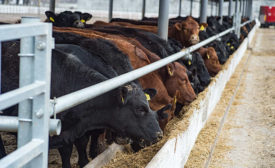Expert Commentary
Guest Commentary | Dr. Phil Bass
The meat industry has bounced back from major challenges and changes before; in the post-COVID-19 world, we should expect a similar outcome.
Read More
Tech | Processing
Tailor-made inventions for food safety
A multi-hurdle approach to pre-harvest interventions can be uniquely designed to meet each operation’s needs.
Read More
Stay ahead of the curve. Unlock a dose of cutting-edge insights.
Receive our premium content directly to your inbox.
SIGN-UP TODAYCopyright ©2024. All Rights Reserved BNP Media.
Design, CMS, Hosting & Web Development :: ePublishing














